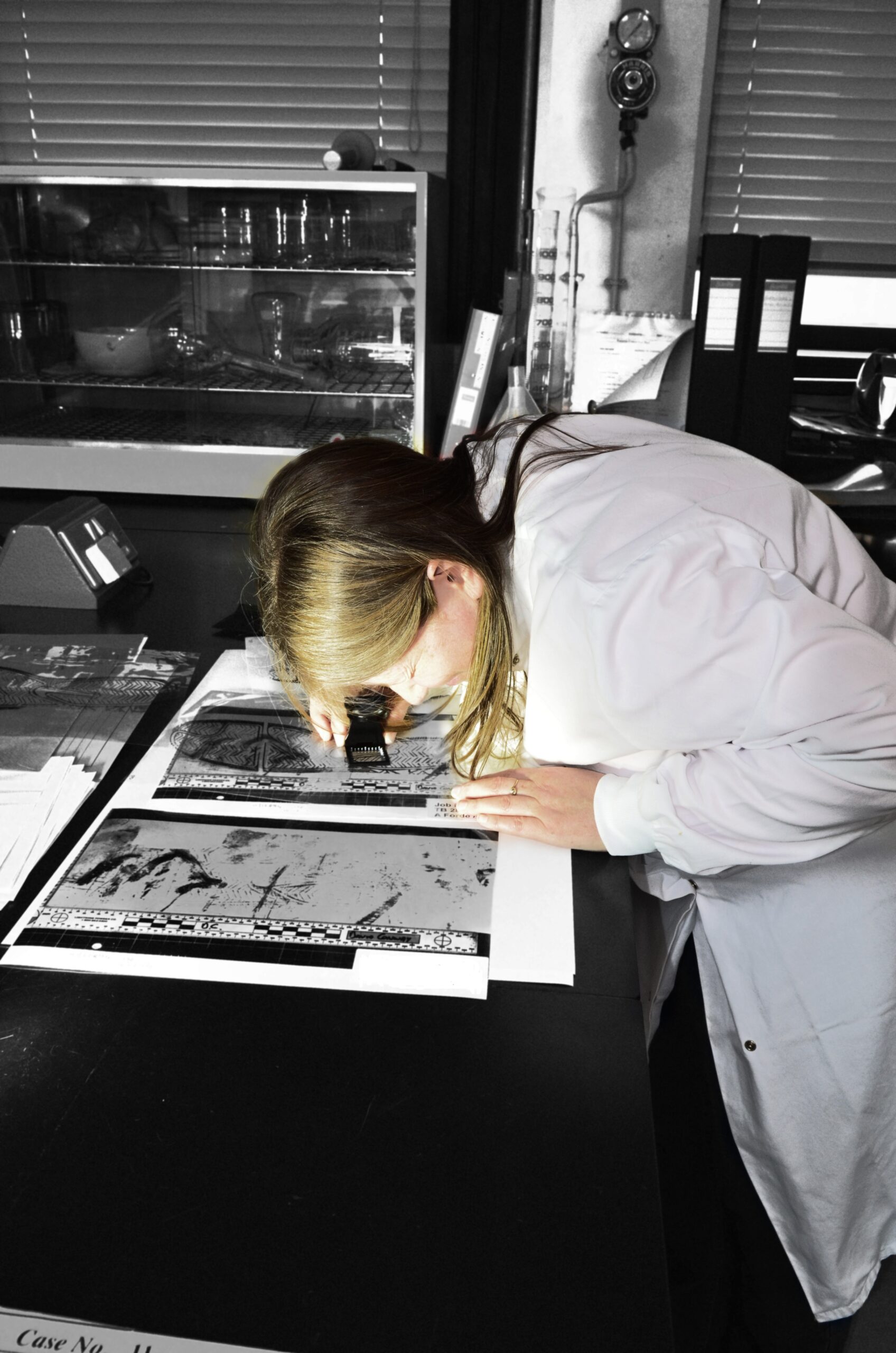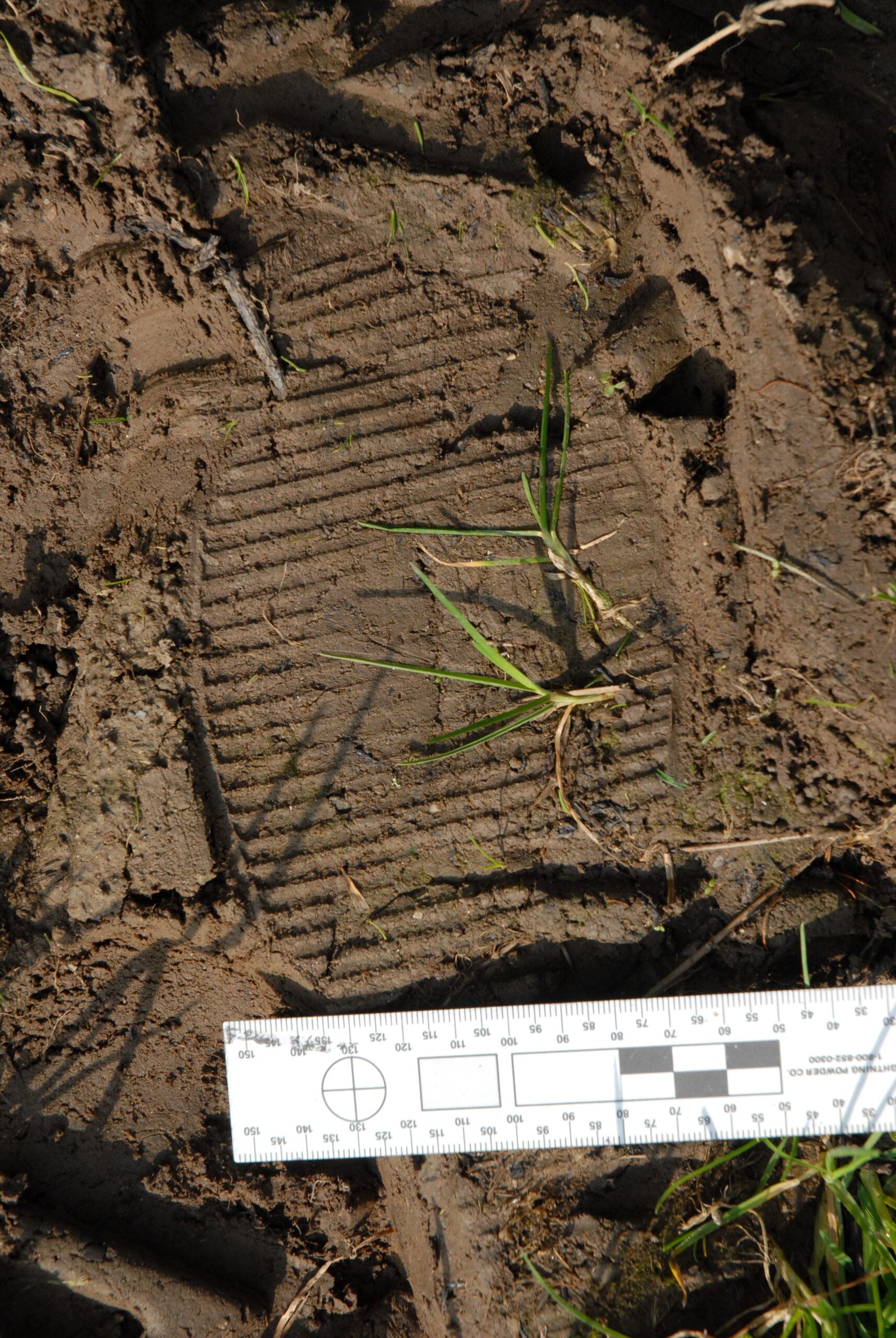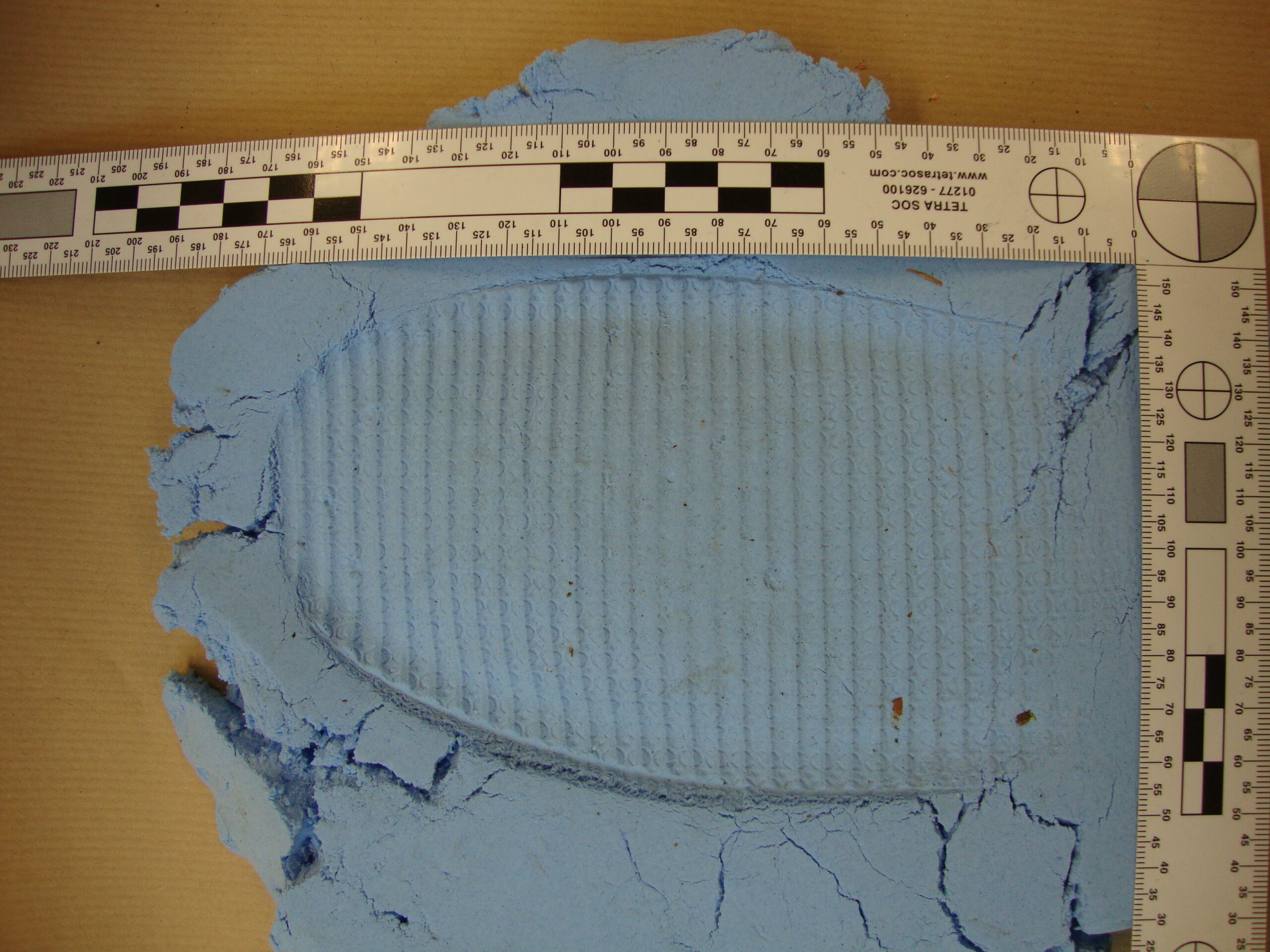Fig.1
Impression Analysis


Fig.2

Fig.3
Footwear
Footwear evidence encompasses the shoeprints and shoe impressions that suspects may leave behind at crime scenes. Every time we walk, our shoes interact with the ground or floor, often leaving traces – these could be visible prints (like dusty or bloody shoeprints on a floor) or three-dimensional impressions (like a shoe indentation in mud or snow). Such marks are a form of pattern evidence, and over time each shoe accumulates wear and damage that can characterise the pattern further. For example, a burglar might wear gloves and avoid leaving fingerprints, yet leave a distinctive muddy boot print on a windowsill or footprints in the soil outside the broken door.
Databases of shoe sole patterns exist to help identify the make and model from a clear imprint. Furthermore, the way the print is left (depth, position) can help reconstruct the activity – deep, well-defined impressions might indicate running or a heavy body weight, whereas scuffs might indicate a person changing direction quickly.
Collection and preservation of footwear evidence is the crucial first step. Investigators will photograph any visible footwear marks at a scene with a scale for size reference. If the impression is three-dimensional (like in soil), they will often create a plaster cast to capture the exact shape. If the print is two-dimensional (like a dirty print on a floor), techniques like gel lifting or electrostatic lifting can be used to transfer the print to a medium for preservation. Sometimes latent footwear marks need to be enhanced/developed before they are visible. There are different chemical enhancement methods available depending on the type and colour of substrate the footwear mark is deposited on e.g. amido black, Hungarian red, coumassie blue can all be used to visualise footwear marks made in blood. For taking an image of the shoe of a suspect for comparison, a sophisticated scanner which produces an image of the shoe to scale is available in FSI.
It’s important for the forensic examiner to also convey the limitations: many shoes of the same make will share similar features, so unique wear or damage marks are what really tie a shoe to a print. Footwear evidence has the advantage that suspects can’t avoid leaving shoeprints as easily as they might avoid leaving fingerprints or DNA at the scene of a crime, and when properly collected and analysed, those prints can provide valuable information which can assist in the investigation of a crime.
